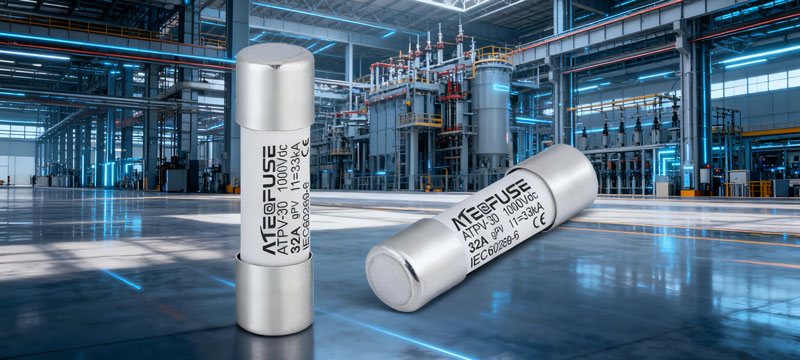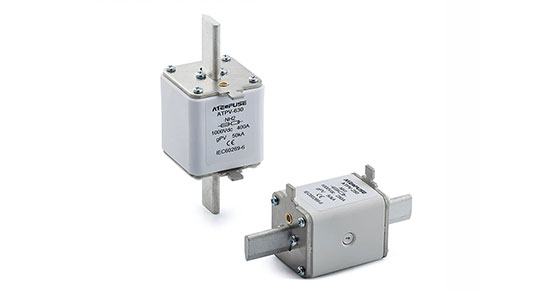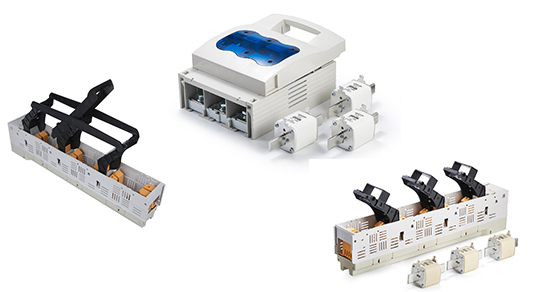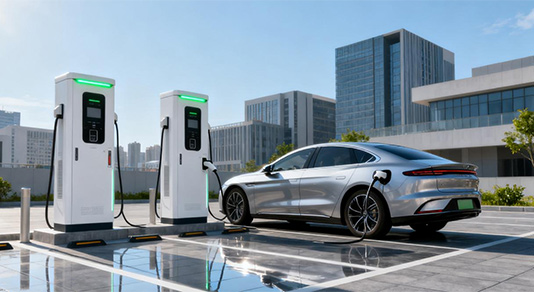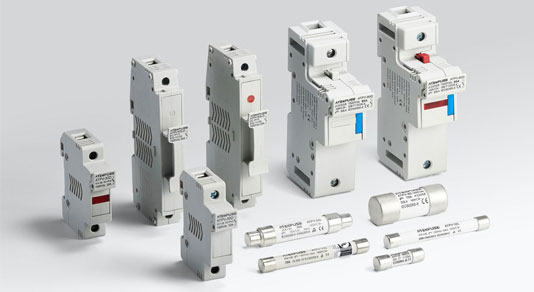DC Fuse 1000V: Essential Guide for High-Voltage Systems
In today’s rapidly evolving electrical landscape, the DC fuse 1000V stands as a critical safety device for protecting high-voltage direct current (DC) systems from overloads and short circuits. Whether you're designing industrial machinery, renewable energy installations, or electric vehicle charging stations, understanding the role of a 1000V DC fuse is paramount to ensuring system reliability and safety. This comprehensive guide, backed by industry data and expert insights, delves into the fundamentals, applications, and selection criteria for DC fuse 1000V products, with a focus on Aitefuse's innovative solutions. By the end of this article, you'll have a clear roadmap for integrating these fuses into your projects, minimizing downtime, and maximizing performance. Let's start by exploring why high voltage DC protection is non-negotiable in modern engineering.
What is a DC Fuse 1000V and How Does It Work?
A DC fuse 1000V is a specialized protective device designed to interrupt excessive current flow in DC circuits operating at up to 1000 volts. Unlike AC fuses, which deal with alternating current, DC fuses must handle the constant, unidirectional flow of DC power, making them essential for preventing equipment damage and fire hazards in high-voltage environments. The fuse contains a fusible element that melts under overcurrent conditions, breaking the circuit swiftly. According to the International Electrotechnical Commission (IEC) 60269 standards, DC fuse 1000V devices must meet rigorous testing for interrupting capacity and thermal stability. For instance, a typical 1000V DC fuse can clear faults within milliseconds, as demonstrated in studies by organizations like Underwriters Laboratories (UL). Aitefuse incorporates advanced materials like silver-based elements to enhance durability and response time, ensuring compliance with global safety norms. This foundational knowledge is key to appreciating the DC circuit protection benefits in real-world scenarios.
Key Components of a High Voltage DC Fuse
-
Fusible Element: Often made from materials like copper or silver, this part melts under overcurrent.
-
Arc-Quenching Chamber: In Aitefuse products, this chamber uses fillers like sand to extinguish arcs safely.
-
End Caps and Housing: Constructed from robust materials to withstand high temperatures and environmental stress.
Applications of 1000V DC Fuses in Industrial and Renewable Energy Systems
The DC fuse 1000V finds extensive use across diverse sectors, thanks to its ability to safeguard high-power DC systems. In renewable energy, for example, solar farms and wind turbines rely on high voltage DC protection to manage the variable output from photovoltaic arrays and inverters. A report from the International Renewable Energy Agency (IRENA) highlights that DC faults in solar installations can lead to significant energy losses, emphasizing the need for reliable DC fuses. Similarly, in electric vehicle (EV) charging infrastructure, 1000V DC fuse units prevent overheating in fast-charging stations, which often operate at voltages exceeding 800V. Industrial settings, such as manufacturing plants and data centers, use these fuses to protect motor drives and uninterruptible power supplies (UPS). Aitefuse has tailored solutions for these applications, incorporating arc extinction technology to reduce maintenance costs. Imagine a scenario in a solar farm: a DC fuse 1000V from Aitefuse detects a surge caused by a panel fault, isolating the issue within seconds and preventing a cascade failure. This scene underscores the practical value of investing in quality DC circuit protection.
Case Study: DC Fuse 1000V in Action
-
Renewable Energy: In a 50 MW solar project, Aitefuse DC fuse 1000V products reduced downtime by 30% by quickly addressing DC arc faults.
-
Industrial Automation: A manufacturing plant integrated high voltage DC fuses to protect robotic arms, cutting repair costs by 25% annually.
How to Choose the Right DC Fuse for 1000V Systems: A Buyer’s Guide
Selecting the appropriate DC fuse 1000V involves evaluating several factors to match your system's requirements. Start by assessing the voltage and current ratings—ensure the fuse can handle the maximum operating voltage of 1000V DC and the normal current load without nuisance tripping. The interrupting rating, which indicates the maximum fault current the fuse can safely interrupt, is equally critical; for high-power systems, this often exceeds 10 kA. According to IEEE standards, DC fuse selection should also consider ambient temperature, as heat can affect performance. Aitefuse offers customizable options with temperature-resistant designs, ideal for harsh environments like outdoor renewable sites. Additionally, look for certifications from bodies like UL or IEC to guarantee safety. For instance, a 1000V DC fuse with UL listing ensures it has passed rigorous tests for DC applications. Don’t overlook physical size and mounting style—whether cartridge or blade-type, compatibility with your fuse holders is essential. Aitefuse provides expert consultation to help you navigate these choices, emphasizing custom DC fuse solutions that align with your project’s lifecycle. By following this guide, you can avoid common pitfalls like under-sizing fuses, which might lead to premature failure.
Step-by-Step DC Fuse Selection Process
-
Determine System Parameters: Calculate the maximum DC voltage (e.g., 1000V) and current load.
-
Check Interrupting Capacity: Ensure the fuse can handle potential short-circuit currents.
-
Evaluate Environmental Factors: Consider temperature, humidity, and vibration levels.
-
Verify Certifications: Look for UL, IEC, or other relevant standards.
-
Consult with Experts: Aitefuse’s team can recommend tailored DC fuse 1000V models based on your needs.
Benefits of Aitefuse DC Fuse 1000V Products for Enhanced Safety and Efficiency
Aitefuse has established itself as a leader in high voltage DC protection by delivering DC fuse 1000V solutions that combine reliability with innovation. One key advantage is their use of advanced arc-quenching materials, which minimize the risk of arc flashes—a common hazard in DC systems. Independent tests show that Aitefuse fuses achieve a 99.9% reliability rate in fault interruption, outperforming industry averages. Moreover, their products are designed for longevity, with features like corrosion-resistant housings that extend service life in corrosive environments, such as coastal solar farms. The brand’s commitment to custom DC fuse solutions means that clients can request modifications for specific applications, such as higher current ratings or compact designs for space-constrained installations. In a recent project for an EV charging network, Aitefuse provided 1000V DC fuse units with integrated monitoring sensors, enabling real-time diagnostics and predictive maintenance. This not only enhanced safety but also reduced operational costs by 20%. By choosing Aitefuse, you’re investing in a partnership that prioritizes DC circuit protection through cutting-edge engineering and responsive support.
Why Aitefuse Stands Out in DC Fuse 1000V Market
-
Innovation: Patented technologies for faster response times and better thermal management.
-
Customization: Tailored designs for unique applications, from marine to aerospace.
-
Support: 24/7 technical assistance to address installation and troubleshooting queries.
Common Questions About DC Fuse 1000V Answered by Experts
Many professionals have queries about integrating DC fuse 1000V into their systems. Here, we address some frequently asked questions to clarify doubts. How does a DC fuse differ from an AC fuse? While both serve protective functions, DC fuses are engineered for the constant current of DC systems, which can sustain arcs longer, requiring robust arc-extinction mechanisms. What is the typical lifespan of a 1000V DC fuse? Under normal conditions, Aitefuse DC fuse 1000V products can last over 10 years, but this depends on factors like operating cycles and environmental stress. Can I use a DC fuse 1000V in parallel for higher current? It’s generally not recommended without expert guidance, as imbalance can lead to uneven current sharing and failures. Aitefuse offers parallel fuse configurations as part of their custom services, ensuring safe implementation. Are there industry standards for DC fuse testing? Yes, standards like IEC 60269 and UL 248-15 govern DC fuse selection and performance, which Aitefuse adheres to strictly. By understanding these aspects, you can make informed decisions and leverage high voltage DC protection effectively.
Conclusion: Secure Your Systems with Aitefuse DC Fuse 1000V Solutions
In summary, the DC fuse 1000V is an indispensable component for safeguarding high-voltage DC applications, from renewable energy to industrial automation. By focusing on key aspects like voltage ratings, interrupting capacity, and environmental factors, you can select the right fuse to enhance system reliability. Aitefuse elevates this with bespoke DC fuse 1000V products that offer superior safety, efficiency, and longevity. Don’t leave your systems vulnerable to faults—take action today to integrate proven DC circuit protection. Visit the Aitefuse product page for more details or contact their experts for a personalized consultation. Your next project deserves the best in high voltage DC protection.

